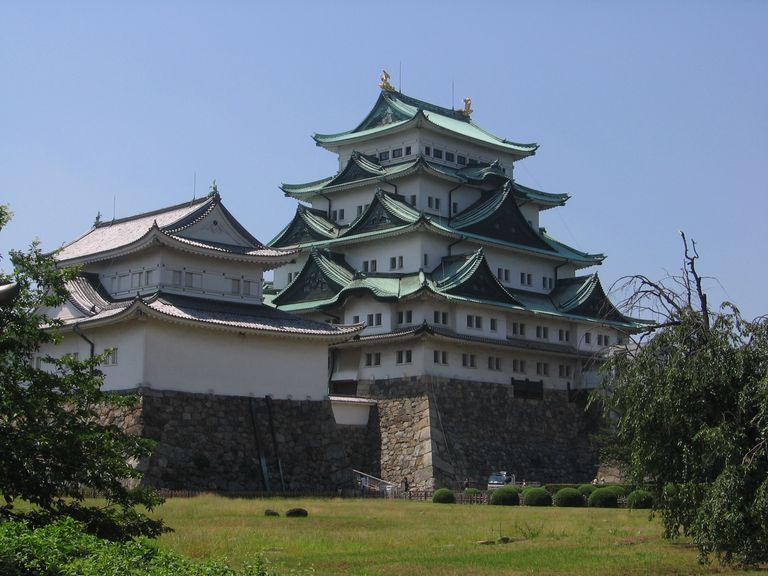
It was a long time ago, and it feels like if half a lifetime has passed. But since I was already using my first digital camera at that time, my own feelings are rather deceiving and we are actually talking about this millennium. But I'm kinda drifting away from the actual topic.
Castles in Japan, there are a lot and you should have seen at least one of them. Since I've been around here for some time now, I've encountered several on my way and I've inspected some of them more thoroughly.
But when I came here first,everything was still new and shiny. And I was excitedly looking around every corner, what there might be to discover. Everything was cool and wacky, every little thing that was different from what I was used to, impressed me enormously. I wanted to look at everything and had to take pictures of all of it. It was just how it should be.
And so it was in Nagoya, a big city in the middle of the Japanese main island of Honshu, which we drove to on our first trip across the country. Nagoya is something like the industrial heart of Japan, with many companies that have or had their production and development facilities here. Toyota and Honda, for example, are located in the Nagoya area and feed and support this region considerably.
In earlier times, Nagoya was an important trading center where various trade routes converged. Such a place must of course be properly fortified and in the early 16th century the predecessor of the present castle was built. After the Tokugawa shogun gained power in Japan, he used Nagoya as an important post to secure his rule and he had Nagoya-jo built on the present site and deputized one of his comrades-in-arms as local lord (daimyo). Divide and rule, according to the textbook.
In the turmoil of the Meiji Restoration, Nagoya-jo was hit hard and the castle was supposed to be razed to the ground. Probably due to the intervention of the German Minister for Japan, Max von Brandt, these plans were abandoned.
During World War II, the castle was hit by a bombing raid on the city and large parts of the castle were destroyed. After the war, the castle was fortunately rebuilt, like other castles in Japan, and is now open to the public.
And exactly for this reason we were lucky to have the opportunity to take a closer look at the castle, which for me as rookie here in the country was of course a big thing, even thoiugh I was sweating like a little piggy in the scorching August heat. But it had been worth it.
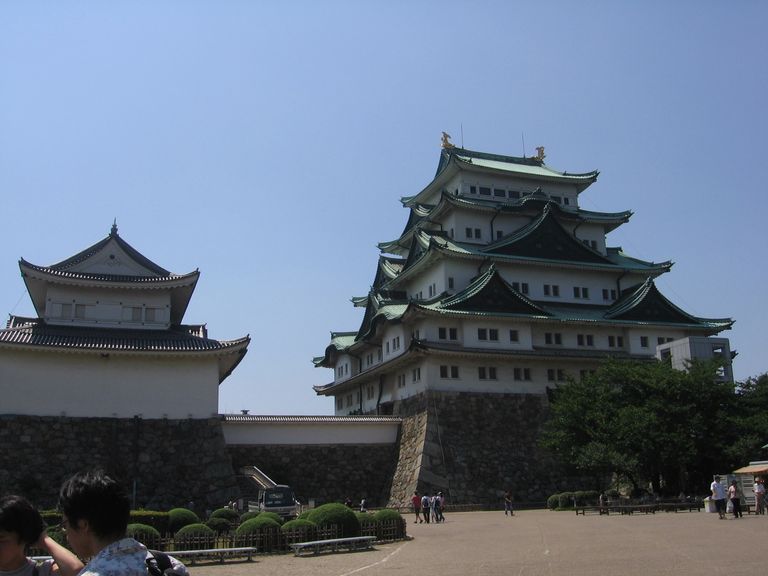

The castle is located right in the middle of the city and from the top you have a nice view of the rooftops of Nagoya, a metropolis, and we could also catch a little breeze that cooled off our sweat faces.

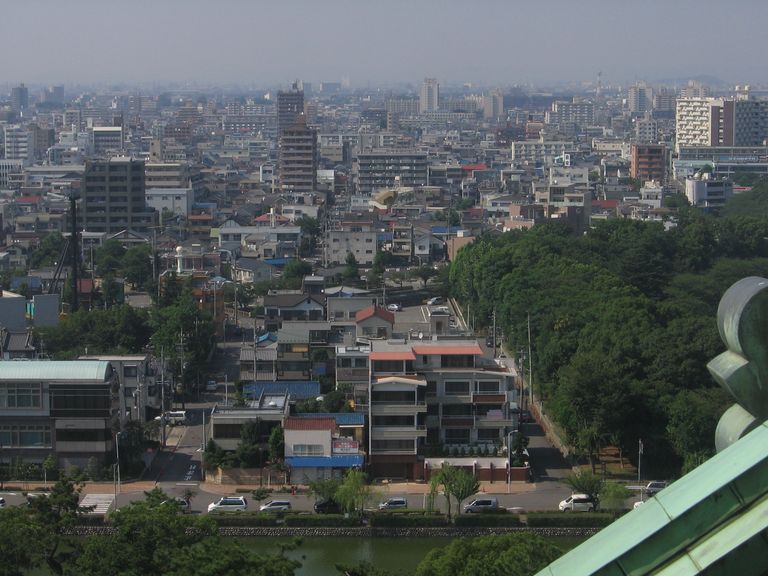
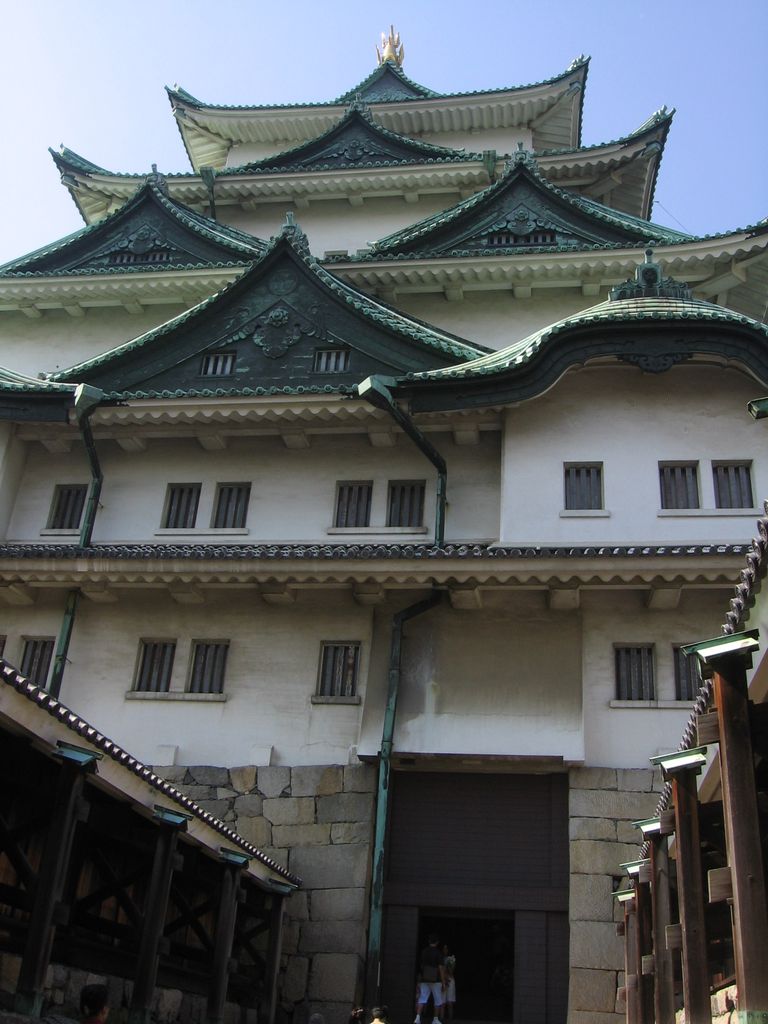
Inside the castle there are various exhibitions covering the history of the castle and the town and also the history of the samurai, who are, after all, part of any proper Japanese castle. Unfortunately, not much is explained in English, so that every unsophisticated visitor, like myself, has to ask the local guide for explanations. Nevertheless, it was fun for all of us.
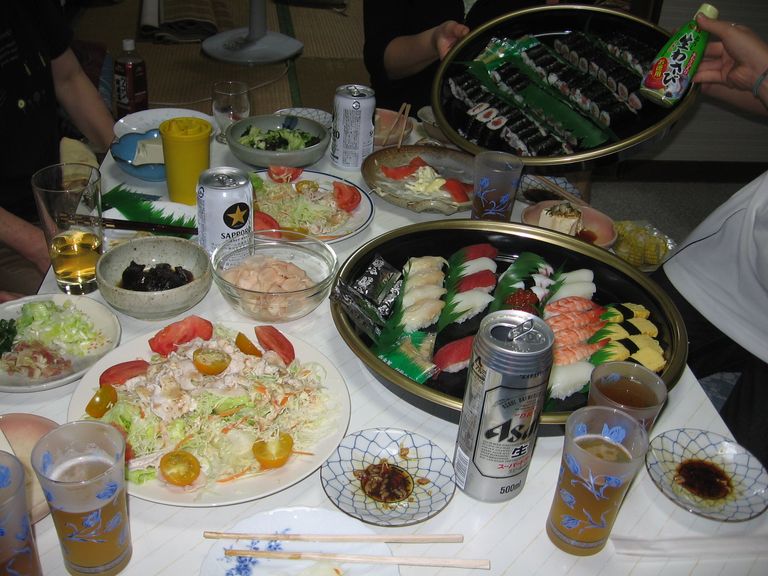
At the end I want to show you some rather different picture, which is a photo of our dinner on that day. Simple but great - sushi, salad and beer. If you don't like it, you don't need to come to Japan.I think one of the three treats offered should probably flatter and settle any stomach.
So, that was it for today. I hope you also enjoyed our little trip to Nagoya and maybe some day life will even lead one or the other to this city. I was only there for two nights, but I would like to make another trip to Nagoya for sure. There is always something new to discover everywhere.
Thanks for reading and please stay tuned for more impressions from the land of the rising sun soon!
Keep up the excellent work and feel free to use #blurtravel tag as one of your first five tags to let us know about your travel story.
You might want to check out the Introduction post of BlurtTravel where you'll find some rules/guidelines to follow for future curation.
Thank you.
thank you